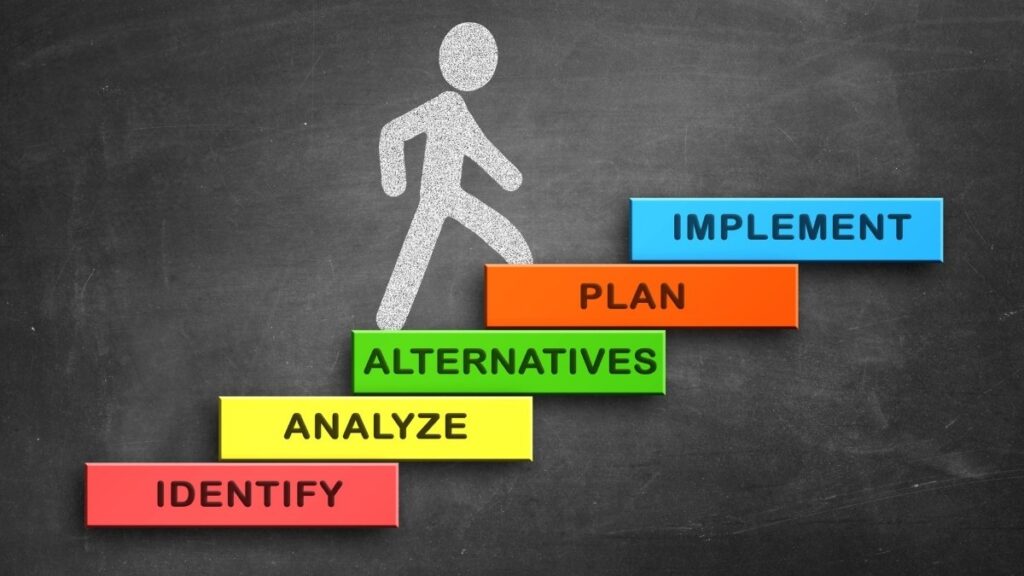
A 65-year-old retiring in 2025 faces an average healthcare bill of $172,500, a figure that has more than doubled since 2002.
This escalating cost serves as a stark wake-up call, especially since one in five Americans admits to never considering these expenses in their retirement planning.
This common oversight often stems from decades of employer-sponsored plans that render healthcare costs nearly invisible. For today’s retirees, who must rely on self-funded accounts, this sudden financial reality demands a proactive and sophisticated savings strategy to protect their nest egg.
The $172,500 Wake-Up Call: Quantifying the Retirement Healthcare Challenge

A 65-year-old retiring in 2025 can expect to spend an average of $172,500 on healthcare throughout retirement. This figure, from Fidelity Investments’ 24th annual Retiree Health Care Cost Estimate, serves as a stark financial benchmark for anyone planning their post-career life.
The number itself is significant, but its trajectory is even more telling. It represents a more than 4% increase over 2024 and is more than double the inaugural estimate of $80,000 in 2002, illustrating the relentless and compounding nature of medical inflation.
This is not a static target but a rapidly moving one, demanding a proactive and sophisticated savings strategy.
Deconstructing the Six-Figure Problem: What Your Health-Care Bucket Must Contain

To effectively plan for this expense, it is critical to understand the anatomy of the $172,500 figure—what it includes and, more importantly, what it excludes. The Fidelity estimate is comprehensive but specific.
It assumes an individual is enrolled in Original Medicare, which consists of Part A (Hospital Insurance) and Part B (Medical Insurance), as well as a Part D prescription drug plan. The estimate accounts for the costs associated with these plans, including monthly premiums, annual deductibles, co-payments, and various out-of-pocket expenses for medical services and medications.
Beyond the catastrophic potential of LTC, a host of other routine but costly expenses are also excluded from the baseline estimate. These include most dental services, routine vision care for exams and glasses, and hearing aids—all common needs for an aging population that are not covered by Original Medicare.
The table below provides a clear distinction between the costs factored into the standard estimate and the additional major expenses that require a separate and robust funding plan.
| Covered by the $172,500 Estimate | NOT Covered (Requires Separate Funding) |
| Medicare Part B Premiums | Long-Term Care (Nursing Home, Assisted Living, Home Health Aide) |
| Medicare Part D Premiums | Most Dental Care (Cleanings, Fillings, Crowns) |
| Medicare Co-payments & Deductibles | Routine Vision Care (Exams, Glasses, Contacts) |
| Out-of-pocket Prescription Drug Costs | Hearing Aids and Exams |
| Over-the-Counter Medications |
Furthermore, these excluded costs are not isolated variables. A major health event, such as a stroke or a dementia diagnosis, can trigger a “cost cascade.” The need for long-term care often coincides with an increase in prescription drug needs, more frequent specialist visits (and their associated co-pays), and the necessity for medical equipment.
This creates a systemic financial shock where multiple cost categories escalate simultaneously, underscoring the need for a flexible and substantial pool of capital that can withstand a multi-front financial challenge.
The Goldilocks Principle: Navigating the Twin Risks of Undersaving and Oversaving

The sheer scale of potential healthcare costs naturally drives a desire to save as much as possible. The consequences of undersaving are severe and well-understood: rapidly draining retirement assets, potentially becoming a financial burden on loved ones, and being forced to make compromises on the quality and location of care.
However, an equally important, though far more nuanced, risk is that of oversaving. In this context, oversaving does not mean accumulating too much wealth, but rather “directing excessive funds toward retirement savings at the expense of other financial priorities”. It is a problem of inefficient allocation, not excess capital.
The pitfalls of this misallocation are tangible and can undermine financial security. The primary danger is creating a liquidity mismatch. Over-emphasizing contributions to tax-advantaged but highly illiquid accounts, such as 401(k)s and traditional IRAs, can leave a household vulnerable to financial shocks before retirement age.
Architecting Your Solution: The Health-Care Bucket Strategy Framework

The ideal approach to funding retirement healthcare must solve the dual risks of having too little money and having that money locked in the wrong places. The “bucket strategy” provides an intuitive and powerful framework for achieving this balance.
The strategy involves segmenting assets into different “buckets” based on the time horizon over which the funds will be needed. This structure is designed to protect near-term spending from market volatility while allowing long-term assets the time they need to grow.
While often applied to general retirement income, this concept can be adapted to create a dedicated master “Health-Care Bucket,” which is itself subdivided into three distinct portfolios, each with a specific purpose and asset allocation.
This approach moves beyond a single savings number and creates a dynamic system for managing healthcare capital throughout retirement.
The Three Health-Care Sub-Buckets
Bucket 1: The Liquidity Bucket (0-3 Years): This bucket is for immediate and near-term needs. Its purpose is to cover predictable annual costs like Medicare premiums, deductibles, and co-pays, as well as to provide a buffer for a moderate, unexpected medical event. The primary goal is capital preservation and instant access.
Accordingly, the assets in this bucket should be held in cash or cash equivalents, such as a high-yield savings account (HYSA) or a money market fund within an HSA. A common guideline is to maintain two to three years’ worth of anticipated routine medical expenses in this bucket.
Bucket 2: The Mid-Term Bucket (4-10 Years): This bucket serves two functions: to systematically refill the Liquidity Bucket as it is drawn down and to fund larger, foreseeable expenses that are on the horizon, such as major dental work or a planned joint replacement.
This suggests a conservative blend of investments, such as short-term bond funds, certificates of deposit (CDs), and potentially a small allocation to a balanced mutual fund.
Bucket 3: The Long-Term Growth Bucket (11+ Years): This is the portfolio’s growth engine. Its primary purpose is to grow substantially over time to combat long-term medical inflation and, crucially, to serve as the primary funding source for a potential long-term care need.
The assets here should be heavily weighted toward a diversified portfolio of global equities, such as low-cost stock index funds or exchange-traded funds (ETFs), which have the highest potential for long-term appreciation.
The following table provides a concrete model of this framework, translating the concept into a tangible portfolio structure that can be adapted to individual circumstances.
| Health-Care Bucket | Time Horizon | Primary Goal | Sample Asset Allocation | Primary Funding Vehicle |
| 1: Liquidity | 0-3 Years | Capital Preservation & Access | 100% Cash / Cash Equivalents | HSA (Cash Portion), HYSA |
| 2: Mid-Term | 4-10 Years | Inflation Protection & Modest Growth | 70% Bonds / 30% Equities | HSA (Invested Portion), Roth IRA |
| 3: Long-Term Growth | 11+ Years | Maximize Growth to Combat Inflation & Fund LTC | 20% Bonds / 80% Equities | HSA (Invested Portion), Roth IRA |
The Ultimate Toolkit: A Comparative Analysis of Your Funding Vehicles

With the bucket framework established, the next critical step is to select the right financial accounts—the tools—to build these buckets in the most tax-efficient way possible.
The three primary vehicles for this purpose are the Health Savings Account (HSA), the Roth IRA, and the traditional 401(k) or IRA. Each has distinct rules and tax characteristics that make it better suited for certain roles within the overall strategy.
The Health Savings Account (HSA): The “Super IRA” for Healthcare

For those eligible—meaning individuals covered by a high-deductible health plan (HDHP)—the HSA is the single most powerful tool for saving for healthcare.
For 2025, the maximum contribution is $4,300 for an individual and $8,550 for a family, with an additional $1,000 catch-up contribution allowed for those age 55 and older. The HSA’s flexibility also directly addresses the fear of oversaving.
After age 65, the account functions like a traditional IRA; funds can be withdrawn for any reason, with non-medical withdrawals simply being taxed as ordinary income. This feature provides a safety valve, ensuring that no dollar is ever “trapped” in the account.
The Roth IRA: The Flexible Backup

The Roth IRA serves as an excellent secondary vehicle for the health-care bucket strategy, primarily due to its remarkable flexibility. The key feature is that an individual can withdraw their direct contributions—the principal—at any time, for any reason, without taxes or penalties.
This makes the Roth IRA an ideal container for funds in the Liquidity or Mid-Term buckets, acting as a powerful, tax-advantaged emergency fund. Furthermore, qualified withdrawals of earnings after age 59.5 (and satisfying the five-year rule) are completely tax-free.
This is a crucial advantage in retirement because these tax-free withdrawals do not count as income. This helps control a retiree’s Modified Adjusted Gross Income (MAGI), which in turn can prevent them from triggering the Income-Related Monthly Adjustment Amount (IRMAA)—a significant surcharge on Medicare premiums for higher earners.
The Traditional 401(k)/IRA: The Strategic Last Resort

Generally, traditional 401(k)s and IRAs are the least optimal tools for direct healthcare spending because all withdrawals are fully taxable as ordinary income. A withdrawal from these accounts not only incurs a tax liability but also increases MAGI, potentially raising Medicare premiums via IRMAA surcharges.
This is an advanced strategy best reserved for funding the Long-Term Growth bucket’s ultimate purpose, and it should be executed in consultation with a financial advisor.
The following table provides a side-by-side comparison of these accounts, clarifying their strategic roles in funding retirement healthcare.
| Feature | Health Savings Account (HSA) | Roth IRA | Traditional 401(k) / IRA |
| Contribution Tax Treatment | Tax-Deductible (Pre-Tax) | Not Deductible (Post-Tax) | Tax-Deductible (Pre-Tax) |
| Investment Growth | Tax-Free | Tax-Free | Tax-Deferred |
| Withdrawal for Qualified Medical Expense | 100% Tax-Free (The Gold Standard) | Tax-Free (but uses up tax-free principal/gains) | Fully Taxable as Income |
| Post-65 Non-Medical Withdrawal | Taxable as Income (No Penalty) | Tax-Free (if qualified) | Taxable as Income |
| Impact on IRMAA Surcharges | None. Withdrawals are not income. | None. Qualified withdrawals are not income. | High. Withdrawals increase AGI. |
| Best For… | Buckets 1, 2, & 3. The primary, dedicated healthcare funding tool. | Buckets 1 & 2. Excellent flexible backup and tax-free funding source. | Bucket 3 (LTC only). Strategic use with medical expense deduction. |
This analysis implies a clear withdrawal hierarchy in retirement to maximize tax efficiency. First, use the HSA for all qualified medical costs to capture its unique triple-tax benefit. For non-medical living expenses, draw from taxable accounts, followed by tax-deferred 401(k)s/IRAs.
The Roth IRA should be preserved as long as possible, serving as the ultimate tax-free reserve fund for major late-life expenses and as the most tax-efficient asset to pass to heirs.
Building Your Personalized Health-Care Bucket: A Step-by-Step Action Plan for 2025

Moving from theory to practice requires a clear, sequential action plan. The following steps synthesize the analysis into a concrete guide for building a personalized and resilient health-care bucket.
Step 1: Calculate Your Number. The $172,500 figure is a national average, not a personal prescription. The first step is to develop a more personalized estimate. This involves assessing several key factors that significantly influence individual costs.
Online tools, such as the Health Care Cost Estimator from Vanguard and Mercer or the Retiree Health Cost Index from Milliman, can provide a more tailored projection based on these inputs. Key variables to consider include:
Health Status: Assess whether personal and family health history places one in a low, medium, or high-risk category, which can alter costs by thousands annually.
Location: Healthcare costs, particularly for supplemental insurance, vary significantly by state.
Retirement Age: Retiring before age 65 necessitates budgeting for private “bridge” insurance until Medicare eligibility begins, a substantial additional cost.
Retirement Income: Project future income to determine the likelihood of triggering IRMAA surcharges on Medicare premiums.
Step 2: Choose and Maximize Your Primary Vehicle (The HSA). For anyone with access to an HSA-compatible health plan, this account should be the cornerstone of their healthcare savings strategy.
The priority should be to contribute the maximum amount allowed each year. When selecting a provider, prioritize those that offer a wide range of low-cost investment options and have no or low minimum cash balance requirements to begin investing.
Once established, implement an investment strategy aligned with the bucket framework—for example, maintaining a cash balance sufficient for Bucket 1 needs while investing the remainder for long-term growth.
Step 3: Fund Your Backup Vehicles. After maximizing annual HSA contributions (and ensuring any available 401(k) employer match is captured), direct subsequent savings intended for healthcare into a Roth IRA. This builds the flexible, tax-free secondary fund that is critical for the Mid-Term bucket and for managing overall retirement tax liability.
Step 4: Implement the Bucket Strategy. Actively allocate capital according to the three-bucket framework. For a 55-year-old, this might mean all new HSA contributions are directed to the Long-Term Growth bucket (e.g., a stock index fund), while ensuring existing cash reserves in a HYSA are sufficient to cover the Liquidity bucket’s needs for the next few years.
Step 5: Keep Meticulous Records. A powerful but underutilized HSA feature is the ability to reimburse oneself for prior medical expenses at any time in the future. If paying for current medical costs with after-tax dollars to allow the HSA to grow untouched, it is essential to save every receipt for qualified expenses.
These receipts effectively become tax-free claims that can be redeemed years or even decades later, turning the HSA into a tax-free emergency fund for any future need, medical or otherwise.
Step 6: Review and Rebalance Annually. This is not a static plan. At least once a year, review healthcare spending, account balances, and asset allocation.
As retirement approaches, a portion of the assets from the Long-Term Growth bucket should be systematically moved to the Mid-Term and Liquidity buckets to reduce risk and ensure funds are available when needed. This disciplined rebalancing is key to the strategy’s long-term success.
Conclusion: Achieving Financial Security Without Sacrificing Your Present
The prospect of funding retirement healthcare, crystallized by the $172,500 estimate, is one of the most significant financial challenges modern retirees face. The true potential cost, once uncovered expenses like long-term care are considered, is substantially higher and demands a dedicated, strategic response.
Simply saving aggressively is not enough; an inefficient strategy can lead to the trap of oversaving, where capital is illiquid and opportunities for growth are squandered.
A successful approach is built on a foundation of balance and efficiency. It begins by moving beyond national averages to calculate a personalized savings goal that reflects individual health, location, and income.
It then requires prioritizing the most powerful tools available, with the triple-tax-advantaged Health Savings Account at the forefront. By structuring these savings within a logical bucket framework, one can simultaneously prepare for immediate needs, plan for intermediate costs, and invest for long-term growth, all while managing risk.
This strategic approach—personalizing the goal, using the right tools, structuring for success, and avoiding the oversaving trap—provides a clear path to financial security. It allows for the construction of a resilient financial future without demanding the unnecessary sacrifice of financial flexibility and quality of life in the present.
The first step is simple and immediate: take action today to calculate a personal cost estimate and, if eligible, open and fund a Health Savings Account for 2025.






